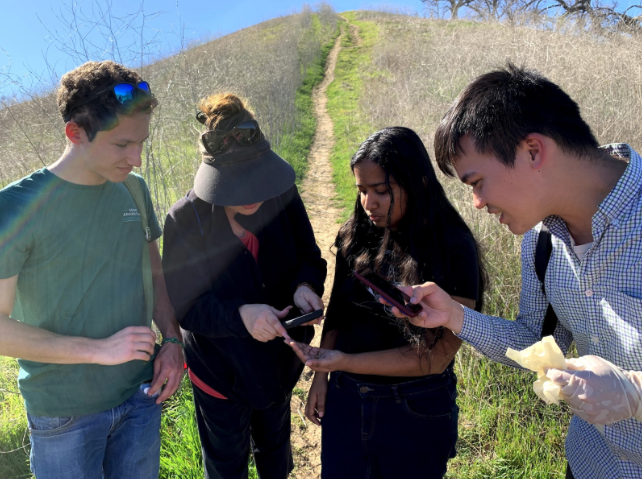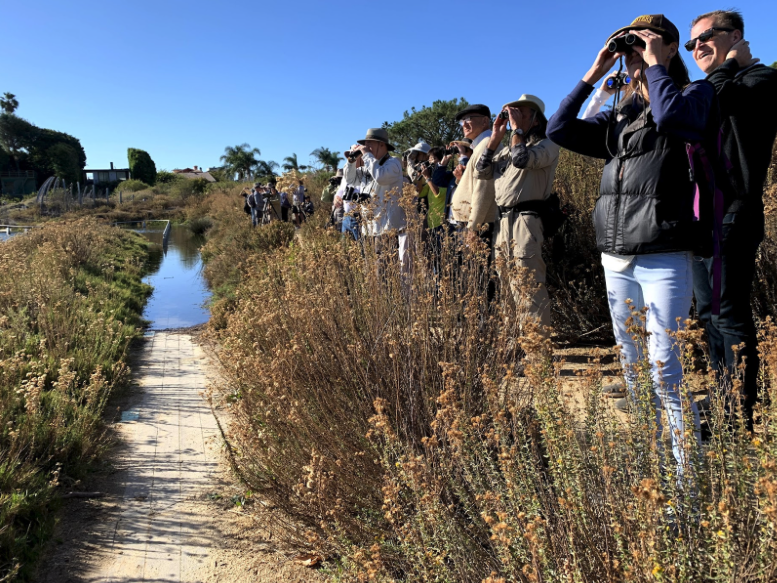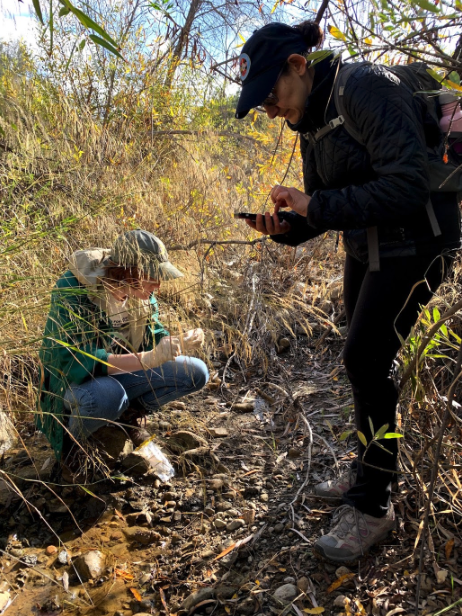The Wayne lab uses environmental DNA (eDNA) analyses to reconstruct the composition of natural communities in California and provide educational opportunities for students and citizen/community scientists to experience and study the natural environment

The Wayne lab uses environmental DNA (eDNA) analyses to reconstruct the composition of natural communities in California and provide educational opportunities for students and citizen/community scientists to experience and study the natural environment with support from UCRI Presidential Grant and HHMI eSIE program. The California Environmental DNA (CALeDNA) Program is a community science initiative established by Robert Wayne (UCLA) and Beth Shapiro (UC Santa Cruz) to monitor all facets of California’s biodiversity and provide critical baseline biodiversity data using eDNA. Since its start in 2017, more than 1500 volunteers have participated in CALeDNA sample collections from 1681 localities (Meyer et al. 2019a). We expect to have a baseline of over 3000 localities statewide with online species lists of bacteria, metazoa, plants and animals at each sampling locality (http://www.ucedna.com). From 278 sites analysed in the first phase, we found distinct diversity patterns across different habitat classifications (Lin et al. submitted).
We have developed methods improving this rapidly emerging technology and applied eDNA to various facets of California’s unique ecosystems. The Anacapa Toolkits were one of the first products from our method development team. It is a flexible modular informatics tool for building comprehensive customizable reference databases and assigning taxonomy to raw multi-locus metabarcode sequence data (Curd et al. 2019).
Ongoing projects extend to a diversity of study systems in California, ranging from paleoecology to ongoing restoration efforts. With recent NSF support, this analysis will extend back in time thousands of years using sediment cores to assess the late Pleistocene-Holocene flora and fauna in Southern California.
We fully utilize the strengths of eDNA for generating biodiversity catalogs. We compared the eDNA metabarcoding based observations with GBIF data in the Pillar Point (Meyer et al. 2019b). We generated a comprehensive fish and invertebrate catalog for the LA Ports biodiversity monitoring programs. Recently, the Mojave Desert Springs were sampled and eDNA results were compared with camera trap data (Mejia et al. in prep).
We are in close collaboration with several restoration efforts in Southern California and committed to use new molecular techniques to inform management decisions. Our “Protecting our River” project is a collaborative effort between researchers, conservation groups, and community scientists to measure the Los Angeles River and its tributaries’ biodiversity, current conditions, and the impact of revitalization efforts. Our lab is studying the soil microbial community in brownfield sites of Los Angeles to identify possible indicator species for habitat restoration.
We’re working on incorporating metabarcoding techniques across ecological and evolutionary fields. Currently, DNA metabarcoding is being used to define the San Miguel island fox (Urocyon littoralis littoralis) diet and elucidate the life cycle of an unidentified acanthocephalan parasite.
- Curd, E. E., Z. Gold, G. S. Kandlikar, J. Gomer, M. Ogden, T. O’Connell, L. Pipes, et al. 2019. Mthds in Eco and Evo:2041–210X.13214.
- Lin, M., A. L Simons, E. E. Curd, R. J. Harrigan, F. D. Schneider, D. V. Ruiz-Ramos, Z. Gold, et al. Sbmtd April 2020 to Ecolog. Mono.
- Meyer, R. S., E. E. Curd, T. Schweizer, Z. Gold, D. R. Ramos, S. Shirazi, G. Kandlikar, et al. 2019a. bioRxiv:503383.
- Meyer, R. S., T. M. Schweizer, W.-Y. Kwan, E. Curd, A. Wall, D. Pentcheff, R. Wetzer, et al. 2019b. bioRxiv:680272.
 Students sampling eDNA at Juan Bautista de Anza Park, Calabasas, Feb. 202 |
 Community Scientists sampling eDNA at Malibu Lagoon w/Santa Monica Bay Audubon Society, Nov. 2019 |
 Community Scientists sampling eDNA at Stunt Ranch UC Reserve, Dec. 2019 |